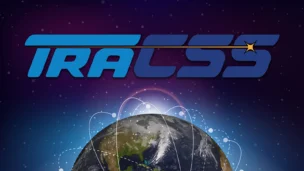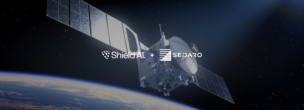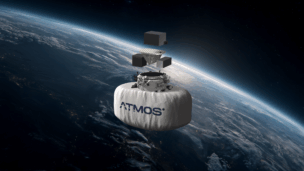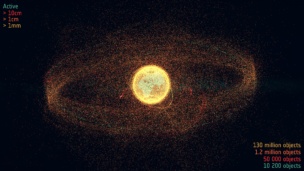This afternoon in Western Australia, LeoLabs pulled the curtain off a new project that’s been in the making for the last nine months: the Western Australia Space Radar (WASR), built along with local partners to augment the company’s satellite and debris tracking capabilities.
WASR is now fully commissioned and includes two S-band phased array radars to track and monitor objects in the sky above the southern hemisphere.
LeoLabs’ strategy: The Menlo Park-based startup is building out the full stack of space situational awareness and space traffic management capabilities, from ground sensing to analytics and collision detection to user-facing tools, including an insurance tool that launched in beta last September.
LeoLabs CEO Dan Ceperley told Payload that he and his team started the company with the goal of building the first global network of radar sensors. “Nobody had contemplated a worldwide network of radars,” Ceperley said. “We’re in the business because nobody else knew how to build radar sites quickly.”
Since founding LeoLabs in 2016, the team has grown to more than 100 employees across four continents, and now operates 10 radars at six sites: Alaska, Texas, Costa Rica, Portugal, New Zealand, and Western Australia.
These radars go up quickly—LeoLabs broke ground on the Western Australia site in April 2022, construction wrapped in November, and the radar was up and running in December. “It’s kind of the new norm, where you’ve been able to advance the technology, advance the know-how, so that these radars can be rolled out,” Ceperley said.
Choosing Australia: Several factors go into choosing an optimal site for a ground radar, Ceperley said. First, the company had to consider the areas of the sky least covered by existing systems.
“It turns out the southern hemisphere basically wasn’t covered for space tracking until we came along,” Ceperley said. “That’s kind of crazy, because every single satellite in LEO spends half its time over the southern hemisphere.” LeoLabs opened its first ground radar in the southern hemisphere in New Zealand before cutting the ribbon on WASR.
Also on the decision table:
- Local partners. LeoLabs has a team of ~10 operating in Western Australia, and has partnered with the Wiilman indigenous community while setting up operations.
- Weather—though for radar, that’s not as much a concern. “We don’t need perfectly clear skies, and radars operate through the clouds, they operate through weather,” Ceperley said.
Looking ahead: Now that WASR is up and running, the data it collects can be incorporated into the company’s full stack of products. And on the radar front, LeoLabs isn’t planning on slowing down—Ceperley said the company is eyeing several new openings in 2023 and 2024.




